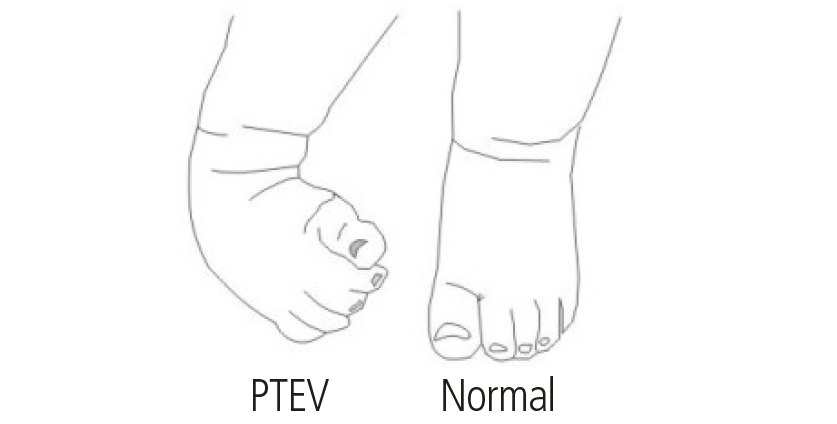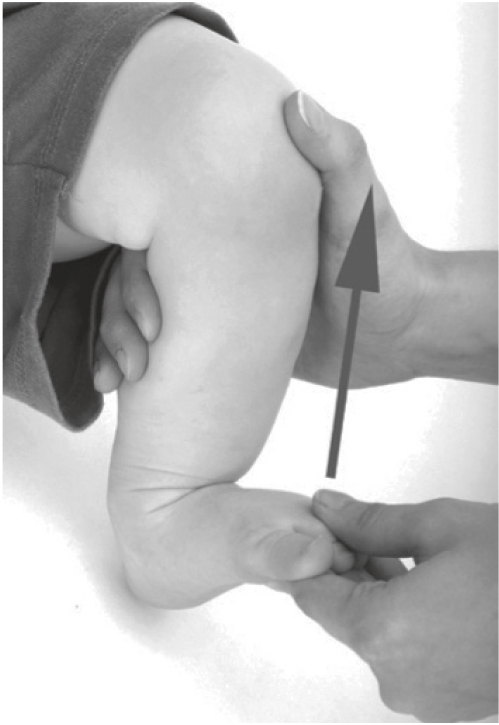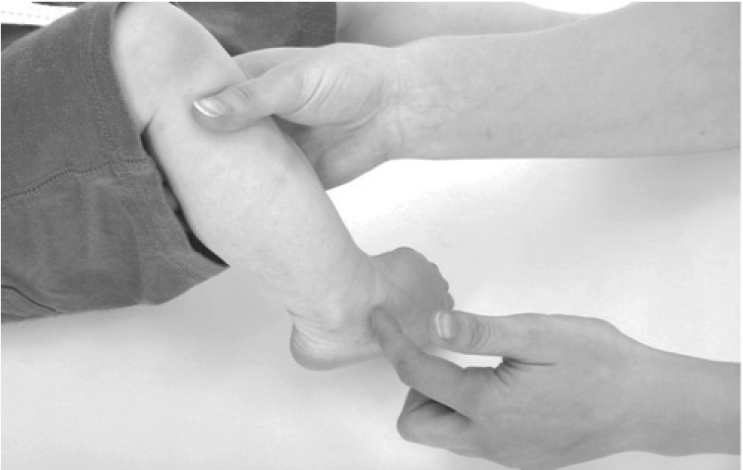Positional Talipes Equinovarus (PTEV)
What is talipes?
This is the condition sometimes called clubfoot. Talipes refers to the foot and ankle. Equinovarus refers to the position of the foot. In this condition the baby’s foot or feet point in and down rather than in the usual position. Talipes occurs in about 1 in 1,000 children and one or both feet can be affected.

What causes positional talipes?
Positional talipes is a common condition caused by some tightness in the muscles around the ankle and the position the baby was in whilst in the womb. It is not caused by problems with the bones in their foot/feet and will not cause any problems with walking. The foot is not fixed in this position and can be moved normally.
How is positional talipes diagnosed?
Positional talipes is usually found by the doctor or midwife during routine checks of your baby after delivery. The senior Orthopaedic Physiotherapist can check your baby and give help and advice.
How is positional talipes treated?
Positional talipes usually improves without any treatment in 2 to 3 months, however, you can help correct the position by following a few simple exercises.
1. Gentle stretches
- With one hand support the calf with the knee bent and with the other hand hold the foot to be exercised.
- The foot can be held with a finger on top and thumb underneath.
- Gently bring the foot round to the middle so it is in line with the leg, then gently bring the foot up into a flat position.
- Hold as long as baby lets you or maximum of 30 seconds.
- Attempt these at every nappy change.

2.
Tickle the outside edge of your baby’s foot. This will strengthen the muscles and encourage the foot to turn outwards which will help correct the position of the foot. The toes will start to spread out when you do this exercise. Do this at regular times during the day.

Also...
Give your baby some time out of their baby-grow to allow them to kick their legs freely.
Make sure your baby’s clothes are not too tight around their feet.
Follow up
Your baby does not need a follow-up appointment unless organised by the Physiotherapist that you see on the ward.
If you have any concerns you can contact the Senior Orthopaedic Physiotherapist on 01709 428170 or discuss with midwife/health visitor.
If you do not have follow up arranged and the positional talipes has not improved within 2 months please see your GP as more treatment may be needed.
How to contact us
Senior Orthopaedic Physiotherapist
01709 428170
Orthopaedic Secretaries
01709 424554
Positional talipes equinovarus (PTEV) - patient information leaflet
Produced by: Kayleigh Wright, Specialist Physiotherapist, Orthopaedics & Mr Stephen Giles, Orthopaedic Consultant. March 2018.
Revised: January 2022. Version: 2.0. Next Revision Due: January 2024.
©The Rotherham NHS Foundation Trust 2022. All rights reserved.
